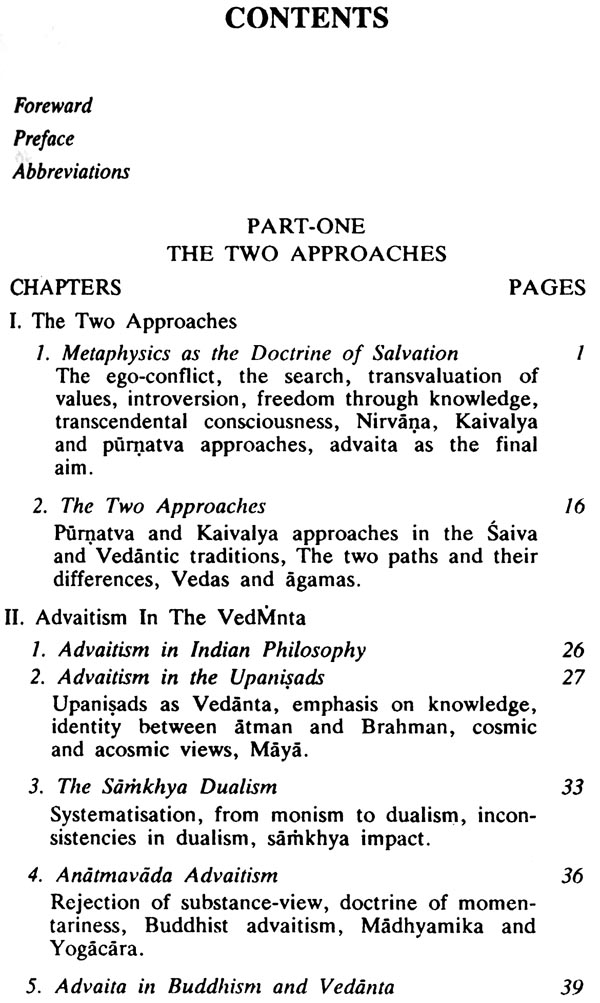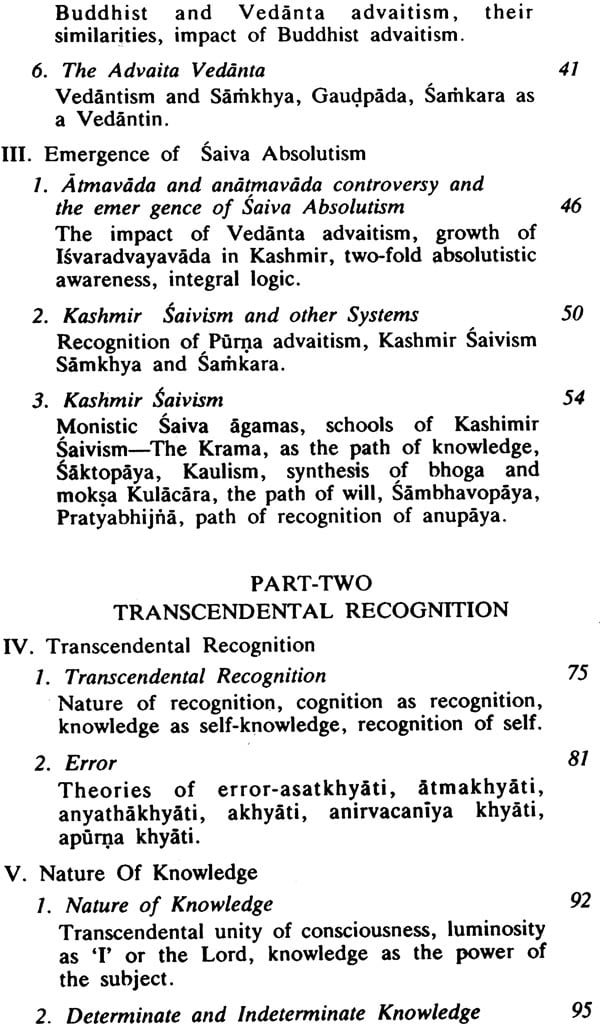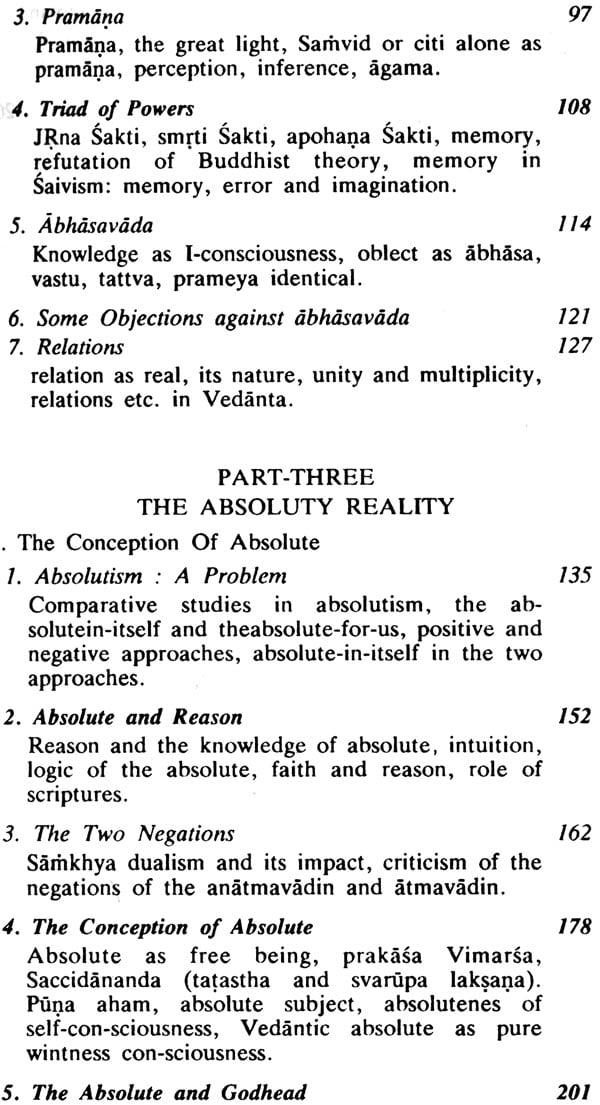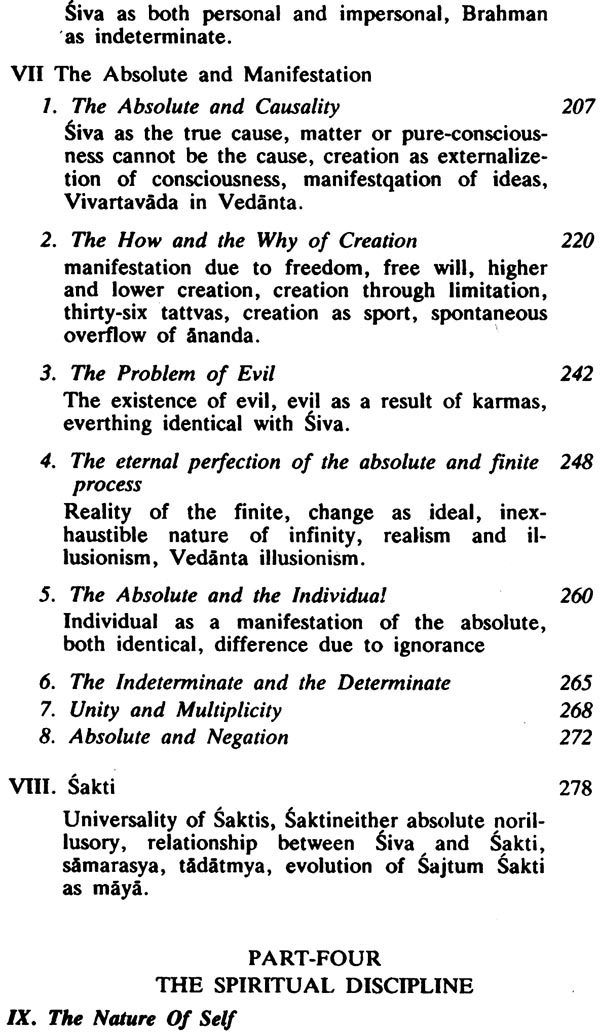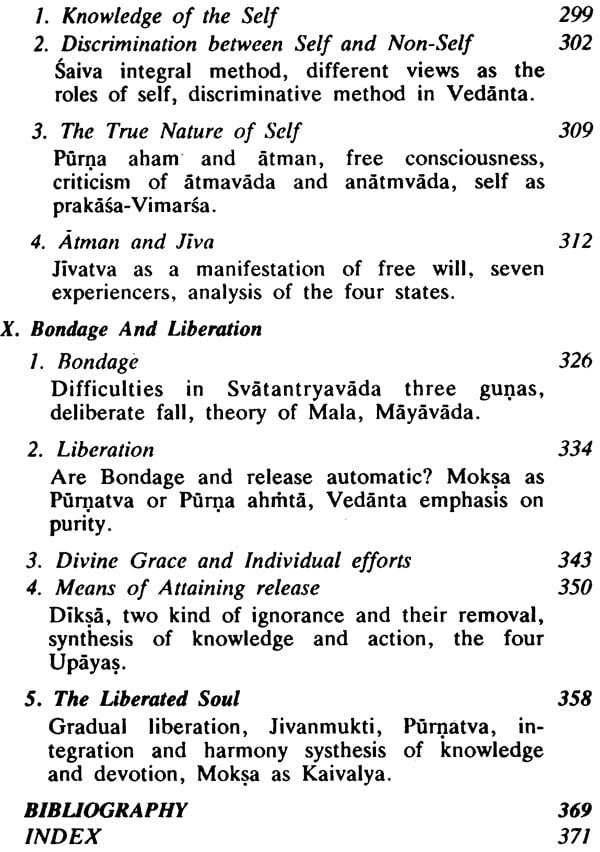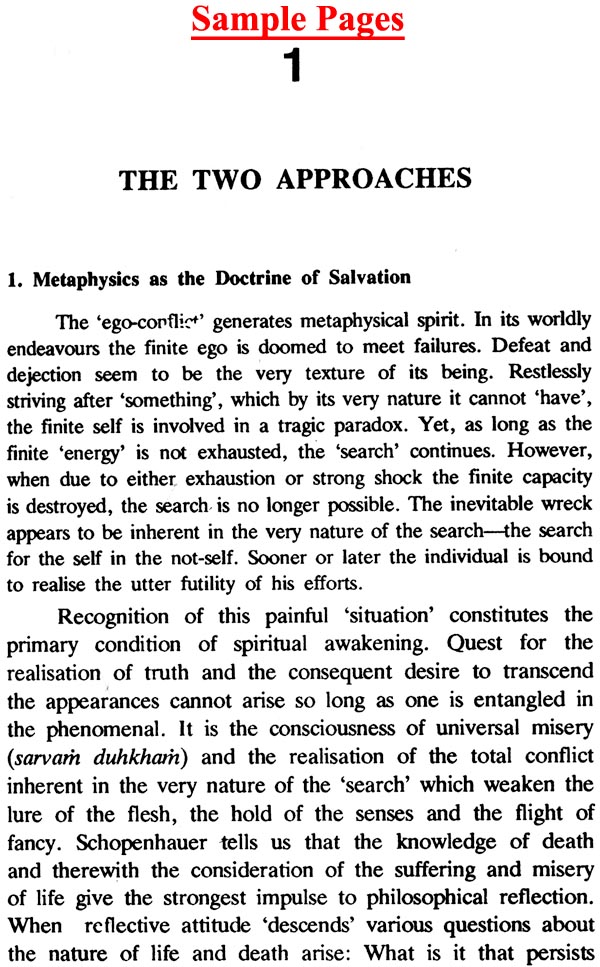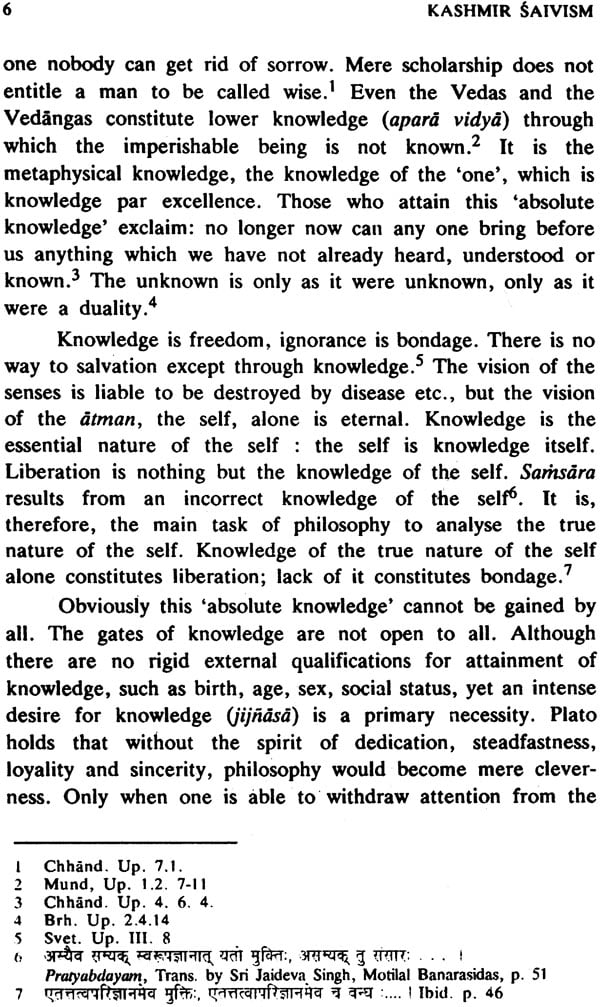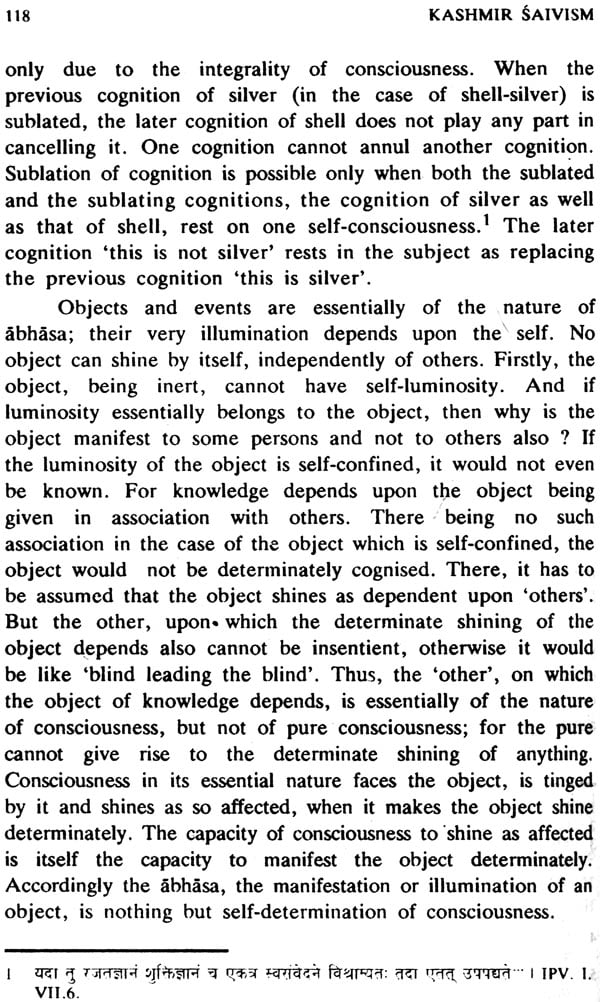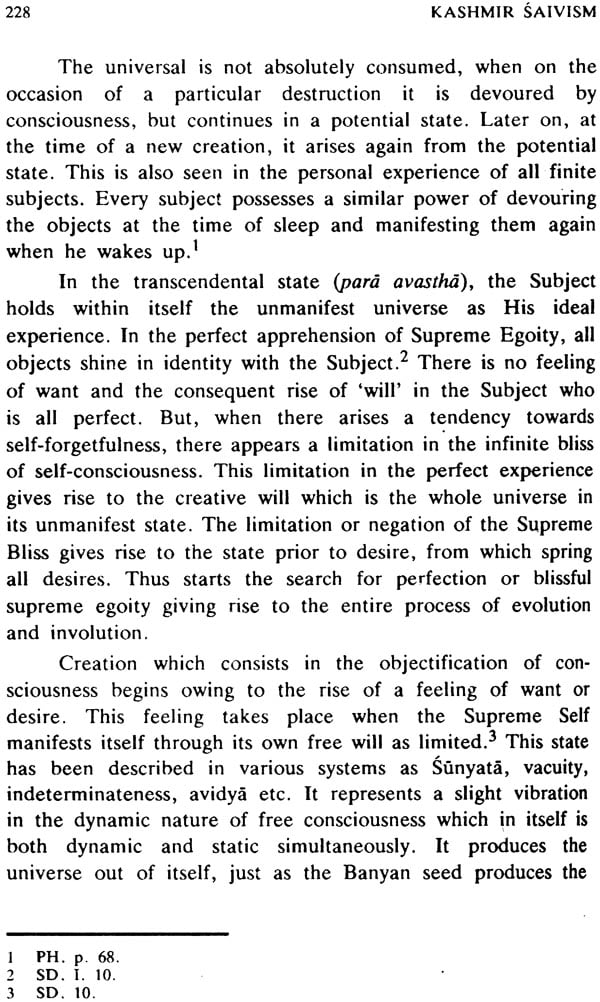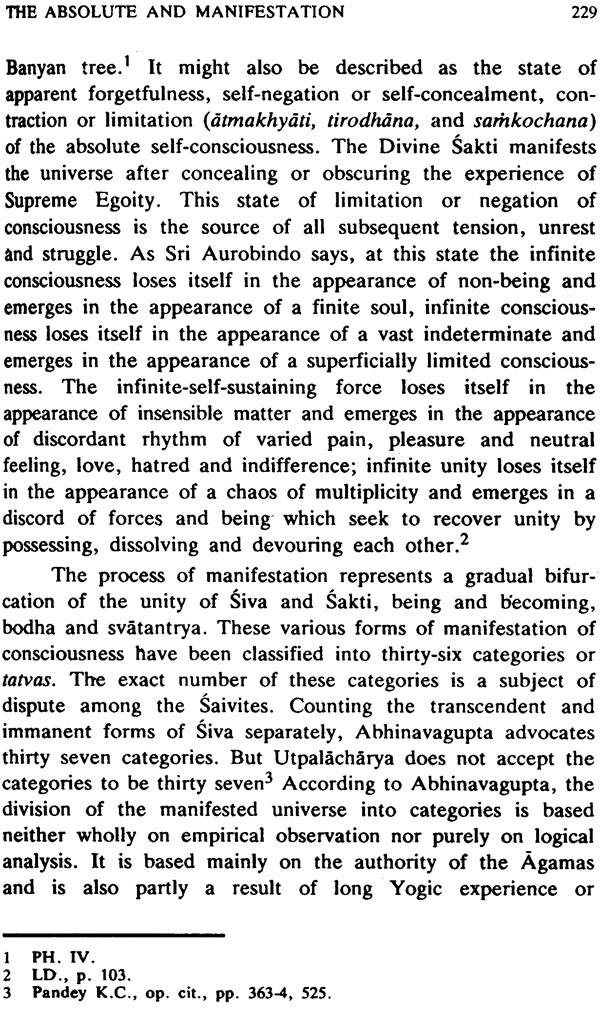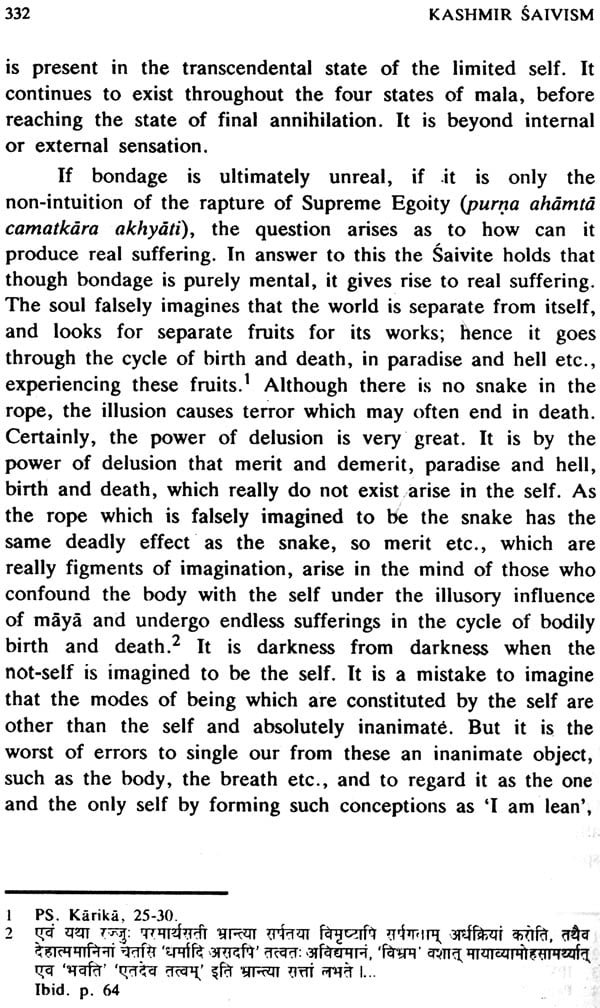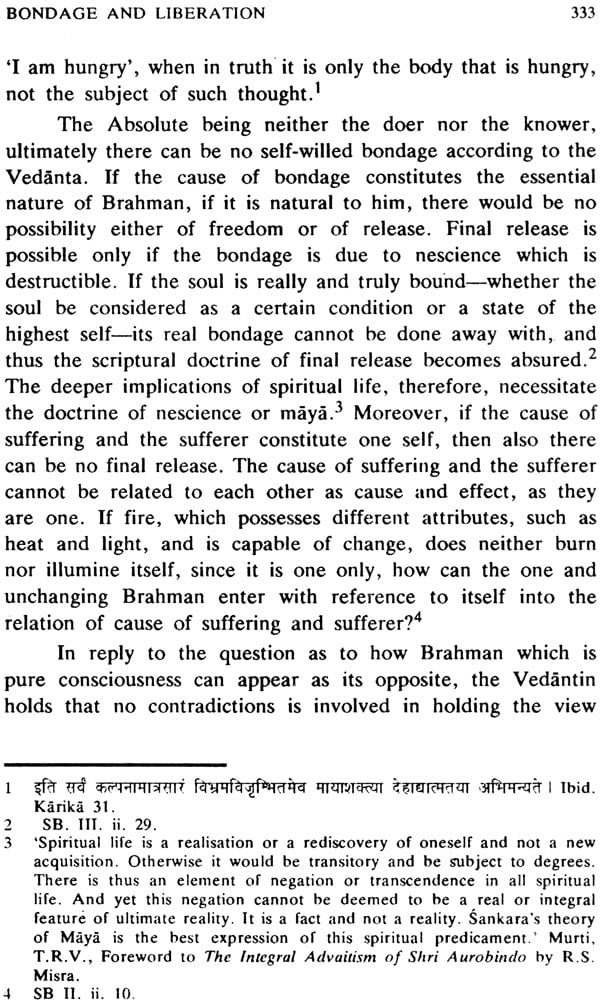
Kashmir Saivism
Book Specification
| Item Code: | NAP909 |
| Author: | L. N. Sharma |
| Publisher: | BHARATIYA VIDYA PRAKASHAN, VARANASI |
| Language: | English |
| Edition: | 2006 |
| ISBN: | 8121701112 |
| Pages: | 395 |
| Cover: | Hardcover |
| Other Details | 8.5 inch x 5.5 inch |
| Weight | 550 gm |
Book Description
Kashmir Saivism sustains a probing dialogue of the Saiva integralist with Vedantic illusionism and Buddhist nihilism. This system has stood the test of time and is attracting attention after a lapse of many centuries. By pronouncing a vigorious affirmation, it shows the fetility of the charge that the Indian Mind is world-negating. It provides an ultimate remedy for what Jung calls 'the general neurosis of our times'. The new generation of today would find that the mystical Siva consciousness attained through this path is free form the evils of drug-induced 'psychedelic nirvana'.
The present study is the first attempt to provide a critical account of absoluti-stic Saivism. While expounding the Saiva approach in relation to Vedanta advaitism, it takes up with commendable lucidity and thoroughness a detailed discussion of some important problems of philosophy and religion. Rather than approaching the subject historically, the author treats the subject conceptually. Though both approaches, in the author's judgement, are fully consistent and justified from their own points of view, Kashmir Saivism, however represents a novel world-affirming attitude which rejects all dualities, bipolarities and conflicts, and harmonises them in the supreme vision of Siva.
The work is divided into four parts. In the first part the author analysis 'the two approaches' of Saiva and Vedanta absolutisms. Theories of recognition' and knowledge have been discussed in the second part. The third part contains a detailed critical exposition.
Of the nature of reality. The conceptions of self, bondage and freedom have been analysed in the last part. Besides analysing critically the Saiva approach to important metaphy-sical and religious issues, throughout the book fruitful comparisons have been drawn between the key concepts of the two absolutistic traditions.
This book, the fruit of serious and sustained research is a highly distinctive contribution to the subject. The author brings out fully the historical and contemporary significance of Kashmir Saivism. The reader will find her, lucid introduction to the system. This critical work is a study of a highly esoteric system, will undoubtedly prove valuable to the students of both philosophy and religion.
Kashmir Saivism, which represents the absolutistic development of Saiva tradition, may be described as theistic absolutism, lsvardvayavada. It includes schools such as Krama, Kaula, Pratyabhijna etc., and provides us an integral vision of reality which is more consistent than many modem forms of integralism and dynamism. It puts forth a wholly dynamic view of life according to which nothing is static or abiding. This system rejects all dualities, bipolarities and conflicts and pronounces a vigorous affirmation. It thus shows the futility of the oft-repeated charge that the Indian Mind is world-negating. For the whole vast soul of India, as Romain Rolland puts it, proclaims the domination of a sovereign synthesis. There is no negation. All the forces of life are grouped like a forest, whose thousand waving arms are led by Nataraja, the master of dance. The ideal of life is harmonious play of all faculties.
The work is divided into four parts. Approaches of Saiva and Vedanta absolutism have been analysed in the first part. Theories of recognition and error are discussed in the second part. The third part contains a detailed critical exposition of the nature of absolute reality. Conceptions of self, bondage and liberation have been analysed in the fourth part. The value of the present study is not in the direction of originality, but in the achievement of greater clarity. Its main purpose is to draw the attention of the scholars and to stimulate them for further study. Keeping this aim in view, problems have been presented in simpler form and English equivalents of Samskrta terms have frequently been used. It is also the reason why I have often quoted Sri Aurobindo who is the best modern representative of integralism.
Being an interpretation, such a study may appear to be misleading. However, the risk is worth-while insofar as it may promote genuine understanding and tolerance of different outlooks. The treatment of the problems is neither historical, nor textual. For I do not have the inclination or the equipment to approach the subject either historically or psychologically. Chronological factors, however, should not count much in a metaphysical discussion.
It is my great privilege to record my gratitude to the various writers, both ancient and modern, from whose writings I have benefited. I am specially indebted to Sri J.C. Chatterjee, Dr. K.C. Pandey, Mm. Pdt. Gopinath Kaviraj and Acharya Ramesvara Shastri for their enlightening exposition of the subject.
My deepest and most sustained obligations are due to my revered teachers Dr. T.R.V. Murti and Mm. Pdt. Gopinath Kaviraj. Dr. T. R. V. Murti, former Head of the Department of Philosophy, Banaras Hindu University, kindly suggested the present subject for research and also agreed to guide me. But for his valuable guidance and kind encouragement this work could not have been complete. I am also deeply indebted to Mm. Pdt. Gopinath Kaviraj at whose feet I learned the secrets of Pratyabhijna. The present work is dedicated to both these teachers as an humble token of my gratitude. I am further obliged to Prof. Murti who has kindly agreed to write the foreword of the book.
I am also obliged to Pdt. Mahadeva Shastri (Mahesvarananda), former Principal, College of Oriental Learning, and Acharya Ramesvara Shastri who kindly explained to me many difficult texts. I must also express my gratitude to Dr. R. K. Tripathi, Dr. K. Sivaraman, Prof. I.A. Alston, Prof. Arbinda Basu, Dr. Karan Singh, for the help they have! given to me. I am also thankful to my friend Dr. H. Lenaerts who prepared the cover of the book.
The present work is a revised version of the Ph. D. thesis approved by the Banaras Hindu University. I am obiged to the University for awarding me the Sayaji Rao Gaekwad Fellowship during my research period. Lastly, I am thankful to Mis Bhartiya Vidya Prakashan for taking interest in the publication of the work.
Little work has been done on Kashmir Saivism, and our knowledge of the system has remained scanty and based on secondary sources. This is all the more surprising since the much-advertised philosophy of Sri Aurobindo is largely derived from this and could be described as a reformulation of the Tantra system in modern idiom. This system is also known as Trika, Tantra and the Pratyabhijna school of philosophy. It could be characterised as an Absolutistic Theism based on the religious life and views depicted in the Saiva Agamas.
One should be grateful to Dr. L.N. Sharma for expounding this interesting system of Philosophy and Religion in such an authentic and brilliant manner. He has relied throughout on the original works of the thinkers of this school, namely Somananda, Utpalacharya, Abhnavagupta, Ramakantha, Bhaskara and others. His insight into the tenets of the system and power of philosophical analysis combined with a flair for precise and lucid expression have enabled Dr. Sharma to bring out in' fullness and clarity the basic conceptions of this philosophy and their implications.
The most valuable feature of this book is its comparative and critical study of Kashmir Saivism with the Advaita Vedanta. Thr distinctive standpoints of these two great systems of thought with regard to the Absolute (Brahman and Siva), Maya and Sakti, the status of the Individual Self and the world process and the problems of Bondage, Evil, Spiritual Discipline and Release are drawn with admirable acumen and understanding. All the other differences stem from the basic conception of Brahman and Siva. While the Advaita Vedanta understands Brahman to be Pure Being or Consciousness, Self-luminous ,(svayamprakasa), it does not invest it with Self-consciousness of the form: 'I know that I am Brahman.' Self-conscious awareness of oneself, as implying an other against which the self-assertion is made, thus belongs to the stage of lsvara or Saguna Brahman as associated with Maya. In the Pratyabhijna school, however, the Absolute Siva is not only Consciousness (prakasa or bodha) but is at once Self-consciousness (Vimarsa, Svatantra). It is Siva and Sakti rolled into one, in a state of equipoise (samarasya, see pp. 257). The absolute Siva integrally contains within himself Creativity, Negation and Immanent Manifestation; Siva is not only Being but also Agent (karta) actively and freely unfolding himself and yet is transcendent (visvamayam visvotirnam ca tattvam). The Vedantist is more interested in maintaining the purity and transcendence of Brahman than in accounting for creation. Brahman is 'free form', a Free Being, whereas Siva is 'free to do'. Freedom (svatantrya) means that "consciousness identifies itself with others and negates itself, merges both into one state (as in Sadasiva) and denies both, which have been merged into one." (p.179 vimarsohi sarvshah, param api atmikaroti, atmanam ca parikaroti, ubhayam ekikaroti, ekikrtam dvayam api nyagbhavyati ityevamasvabhavah). The Vedantist believes that Free Being is the pre-supposition of the Freedom to act, Brahman freely phenomenalises himself as Isvara (Saguna-brahman) to create the world.
The Saiva absolutist thinks that he has successfully resolved the problem of the world-process without having resourse to the illusion theory by lodging the principle of differentiation within Siva. It should be interesting to know the answer of the Saivite on the question of why and how the Lord himself becomes the creature (patireva grhita pasubhavah). "As Siva, he is perfectly free from all impurities. But when he is associated with Maya and is, therefore, manifested as limited, he is called pusu, the bound. There is no essential difference between the absolute and the in- dividual." (p. 238). How can Siva consciously forget himself, consciously lose his lordly status and become bound, that is to be unfree freely, a contradiction in terms? Freedom from bondage comes through the that I am the Lord. Does not this cancel or destroy without residue creaturely consciousness and finitude? If it does, the Saivce has to accept a case of absolute negation, the Vedantist's avidya or maya which he professes to have discarded. If it does not cancel even partially the finitude, there is no freedom (moksa), at least not from the recognition. If the Saivite accepts negation, his position would be reduced to that of Vedanta. The Maya of Vedanta correctly interpreted, means the Transcendent Freedom of Brahman to appear or not to appear or appear in other forms.
This and most other philosophical issues are discussed in this admirable book of Dr. Sharma with a wealth of detail and acute analytical skill. He does not take sides, but brings out the distinctions most clearly. All philosophical dispute and discussion results in making the standpoints of the disputants clear and distinct. As Dr. Sharma states: "In the preceding pages, attempt has been made to discuss some of the important points concerning the problem of the absolute and its manifestations. The central problem which persists throughout this discussion is whether the manifestation of the finite process from the infinite is logically possible. And if the process is logically possible, then how and why does it take place ? Finally, how far is it proper to uphold the reality of the process and still maintain the perfection of self-identity of the Absolute? At present, it is not our purpose to determine the validity or invalidity of a particular stand-point, nor would it be proper to do so. At the most, we may compare and contrast the two standpoints and thereby try to find out the consistency or inconsistency in them (pp. 236-37). This attitude is commendable and proper.
Dr. Sharma's work is an excellent and sustained piece of philosophical investigation. I consider it a significant contribution to our understanding of the relative positions of the two great systems of Indian thought- Saiva Absolutism and Advaita Vedanta. This book will remain, I hope, the standard work on Kashmir Saivism for quite a while.
